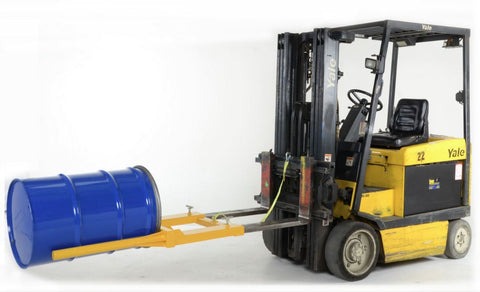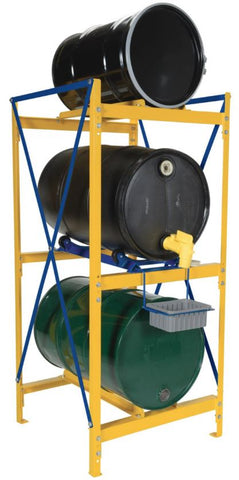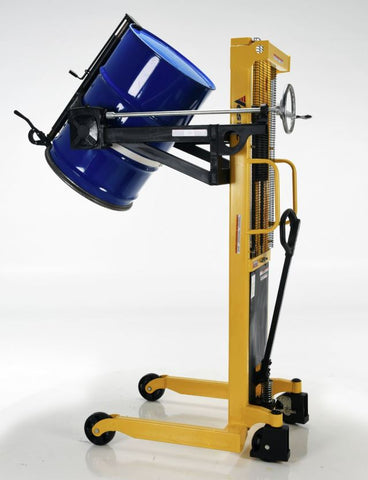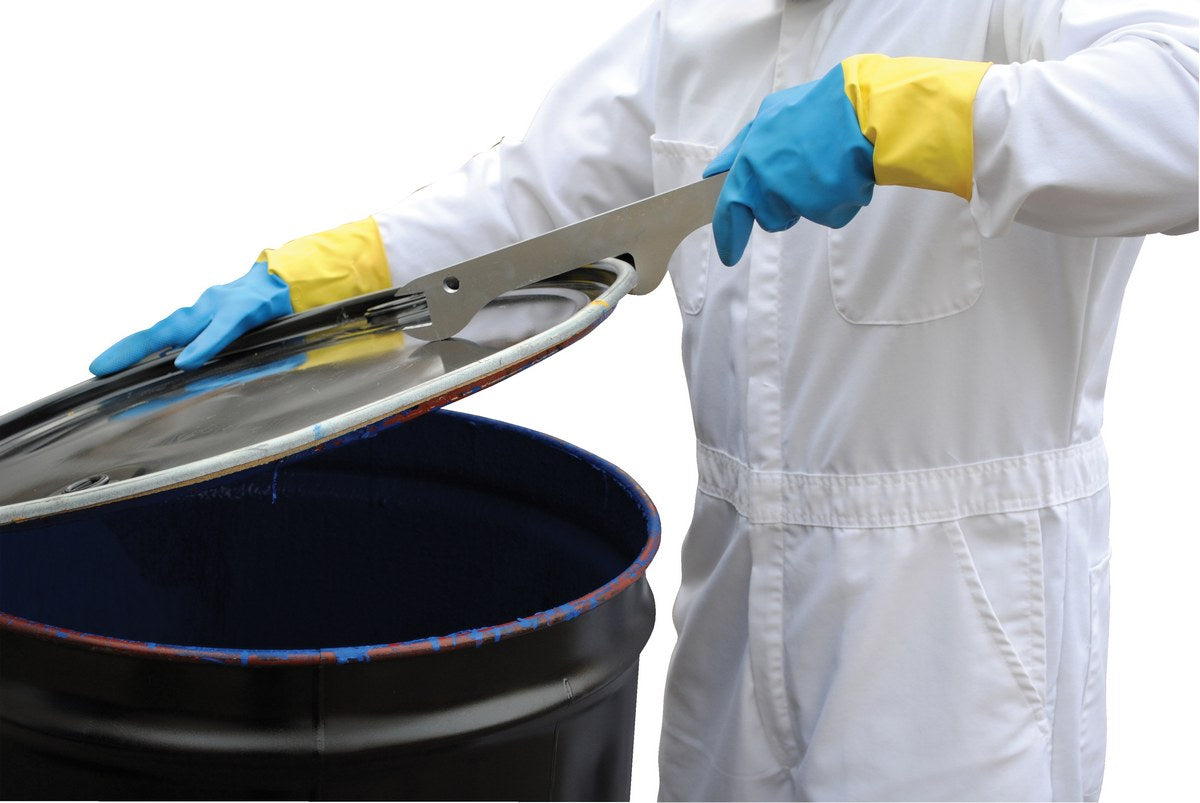Safe and Efficient Drum Handling
Drum handling equipment is essential in many industries for safe and efficient transportation and storage of drums. Whether you are dealing with hazardous materials, chemicals, or even food products, having the right equipment and following proper safety measures is crucial. In this ultimate guide, we will explore the different aspects of drum handling equipment, from understanding the basics to selecting the right equipment, maintenance and care, and developing the necessary skills for effective drum handling.
Understanding Drum Handling Equipment
Basic Principles of Drum Handling
Before diving into the various types of drum handling equipment available, it is important to understand the basic principles behind drum handling. Drums are heavy and cumbersome objects, often weighing hundreds of pounds when fully loaded. As such, they require specific techniques and equipment to ensure safe and efficient handling. One of the fundamental principles of drum handling is maintaining a proper center of gravity. This involves distributing the weight evenly and keeping the drum's center of gravity within the equipment's lifting capacity.
Another important aspect of drum handling is securing the drums during transportation or storage. Using proper restraints and fastening mechanisms is crucial to prevent accidents, spills, and injury.
Ensuring the safety of drum handling operations is not only important for the well-being of workers, but also for the protection of the environment. Improper handling can lead to leaks and spills, which can contaminate soil and water sources. Therefore, it is essential to invest in high-quality drum handling equipment that meets industry standards and regulations.

Types of Drum Handling Equipment
Now that we have a basic understanding of drum handling principles, let's explore the different types of equipment available.
-
Drum Dollies: Drum dollies are wheeled platforms specifically designed to support and transport drums. They usually feature a low profile design, allowing for easy maneuverability and stability. Drum dollies often come with locking mechanisms to prevent the drums from rolling or sliding off during transportation.
When selecting a drum dolly, it is important to consider the weight capacity and the type of wheels used. Heavy-duty wheels are recommended for rough terrains, while non-marking wheels are ideal for delicate surfaces. Additionally, some drum dollies come with ergonomic handles and adjustable features to accommodate different drum sizes. -
Drum Lifters: Drum lifters are devices that allow for vertical lifting and lowering of drums. They come in various configurations, including manual, electric, and hydraulic options. Drum lifters are commonly used in industries where drums need to be moved from one location to another, such as manufacturing facilities and warehouses.
When choosing a drum lifter, it is crucial to consider the lifting capacity and the type of drum attachment mechanism. Some drum lifters use clamps or hooks, while others utilize straps or chains. Additionally, safety features like overload protection and automatic locking mechanisms should be taken into account to ensure safe and efficient operation. - Palletizers: Palletizers are used to stack drums on pallets, making them easier to transport and store. These devices typically have adjustable arms or forks that can be positioned to accommodate different drum sizes. Palletizers are especially useful when dealing with a large number of drums. When investing in a palletizer, it is important to consider the weight capacity and the maximum stacking height. Some palletizers come with advanced features like automatic stacking and destacking, which can significantly improve productivity. Additionally, palletizers with built-in safety features, such as anti-tip mechanisms and load sensors, provide an extra layer of protection during the stacking process.
- Drum Dispensers: Drum dispensers are designed to safely and efficiently empty the contents of a drum. They often feature mechanisms that allow for controlled pouring, preventing spills and waste. Drum dispensers are commonly used in industries where the drum contents need to be transferred to other containers or used directly in production processes. When selecting a drum dispenser, it is important to consider the compatibility with different drum sizes and types. Some dispensers are designed for specific drum materials, such as steel or plastic. Additionally, features like flow control valves and drip pans can enhance the accuracy and cleanliness of the dispensing process.
By understanding the basic principles of drum handling and exploring the different types of equipment available, you can make informed decisions when it comes to selecting the right drum handling equipment for your specific needs. Remember, investing in high-quality equipment not only ensures the safety of your workers but also contributes to a more efficient and productive work environment.
Safety Measures in Drum Handling
Personal Protective Equipment (PPE) for Drum Handling
Ensuring the safety of personnel involved in drum handling operations is of utmost importance. Personal Protective Equipment (PPE) plays a vital role in minimizing the risk of injury. When handling drums, individuals should wear appropriate PPE, including gloves, safety goggles or face shields, and protective clothing. The specific type of PPE required may vary depending on the nature of the substances or materials contained in the drums. It is crucial to follow industry regulations and guidelines when selecting and using PPE.
Safety Protocols and Procedures
In addition to PPE, following proper safety protocols and procedures is essential for safe drum handling. This includes conducting thorough risk assessments, providing adequate training to employees involved in drum handling operations, and implementing clear procedures for the use of equipment. Regular safety inspections and maintenance checks should also be performed to ensure that all equipment is in good working condition. Furthermore, it is important to establish emergency response protocols in case of accidents or spills. Having well-trained personnel and proper containment and cleanup procedures in place can greatly minimize the impact of potential incidents.

Selecting the Right Drum Handling Equipment
Factors to Consider When Choosing Equipment
When selecting drum handling equipment, there are several factors to consider to ensure that you choose the right tool for the job. Firstly, you need to assess your specific needs. Consider the size, weight, and type of drums you will be handling, as well as the frequency of handling operations. Different equipment may be required for handling small drums compared to larger ones.
Secondly, think about the environment in which the equipment will be used. Does it need to withstand harsh conditions, such as extreme temperatures or corrosive substances? If so, selecting equipment made from appropriate materials, such as stainless steel or specialized coatings, is crucial for longevity and safety.
Lastly, consider the ergonomics and ease of use of the equipment. Look for features such as adjustable handles, intuitive controls, and accessibility to ensure that the equipment can be operated comfortably and efficiently.
Understanding Your Drum Handling Needs
To make an informed decision when selecting drum handling equipment, it is essential to have a thorough understanding of your specific needs. Evaluate your current and anticipated future drum handling requirements. Consider factors such as the volume of drums being handled, the types of materials or substances contained in the drums, the distances involved in transportation, and any specific safety or regulatory requirements. Consulting with industry experts or equipment suppliers can be valuable in helping you assess your needs and identify the most suitable equipment.
Maintenance and Care for Drum Handling Equipment
Regular Inspection and Maintenance
Proper maintenance and regular inspection of drum handling equipment are crucial for ensuring its safe and optimal performance. Establish a maintenance schedule and conduct routine inspections to identify any signs of wear, damage, or malfunction. Pay attention to critical components such as wheels, lifting mechanisms, and locking mechanisms.
Perform preventive maintenance tasks such as lubrication, cleaning, and tightening of fasteners as recommended by the manufacturer. Replace any worn or damaged parts promptly to prevent accidents and maintain the equipment's functionality.
Troubleshooting Common Issues
Despite taking preventive measures, drum handling equipment may encounter issues from time to time. It is important to know how to troubleshoot and resolve common problems. This may involve consulting the equipment's manual, contacting the manufacturer for support, or seeking assistance from trained technicians. Regular training sessions for operators can also empower them to identify and resolve minor issues, reducing equipment downtime and improving overall efficiency.

Training and Skills for Effective Drum Handling
Essential Skills for Drum Handling
Effective drum handling requires specific skills and knowledge. Operators should be trained in proper lifting techniques, using equipment controls, and understanding the limitations of the equipment. They should also be aware of relevant safety regulations and procedures.
In addition to technical skills, operators should possess good communication skills to effectively coordinate with other team members during drum handling operations. Being able to assess potential risks, make informed decisions, and adapt to changing situations are also important qualities for safe and efficient drum handling.
Training Programs and Certifications
Investing in comprehensive training programs and certifications for drum handling can greatly enhance the competency and safety of your personnel. These programs cover topics such as equipment operation, maintenance and inspection, hazard identification, emergency response, and regulatory compliance.
Look for training providers that offer hands-on practical training, theoretical knowledge, and assessments to ensure that participants gain a thorough understanding of drum handling principles and best practices. Certifications obtained through accredited programs can serve as a testament to operators' competency and commitment to safety.
In conclusion, drum handling equipment is a critical component in various industries. Understanding the basics of drum handling, selecting the right equipment, implementing proper safety measures, and training personnel are key elements in ensuring safe and efficient drum handling operations. By following this ultimate guide, you will be well-equipped to handle drums with confidence and minimize risks in your workplace.

